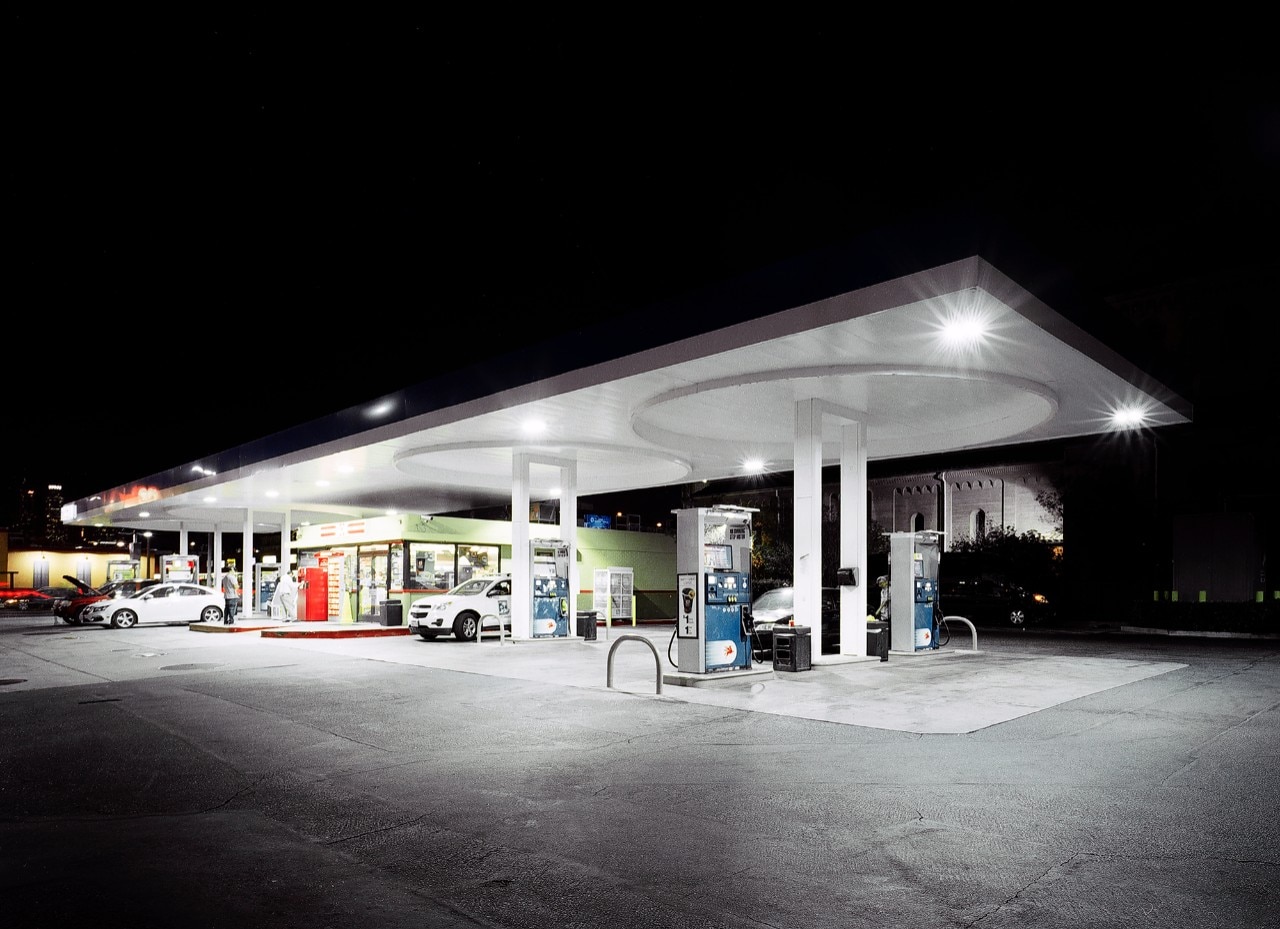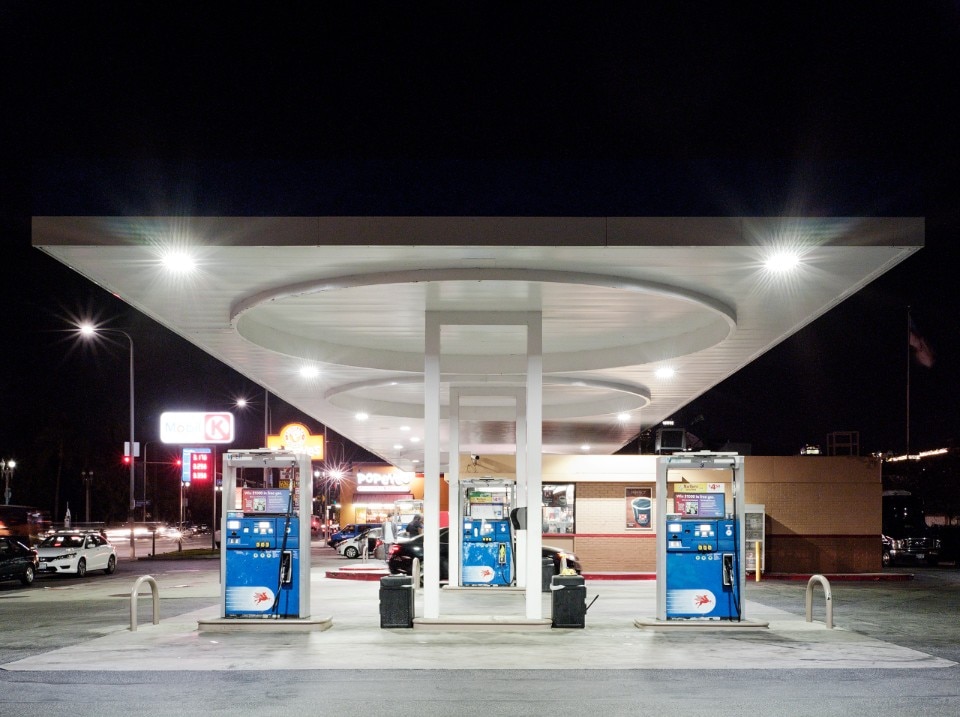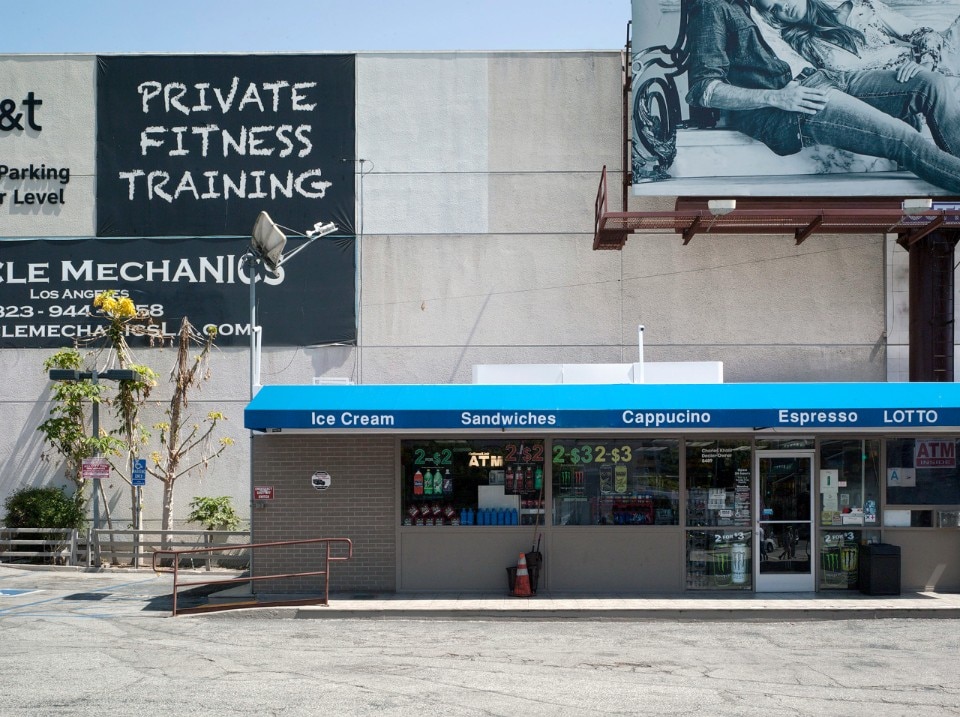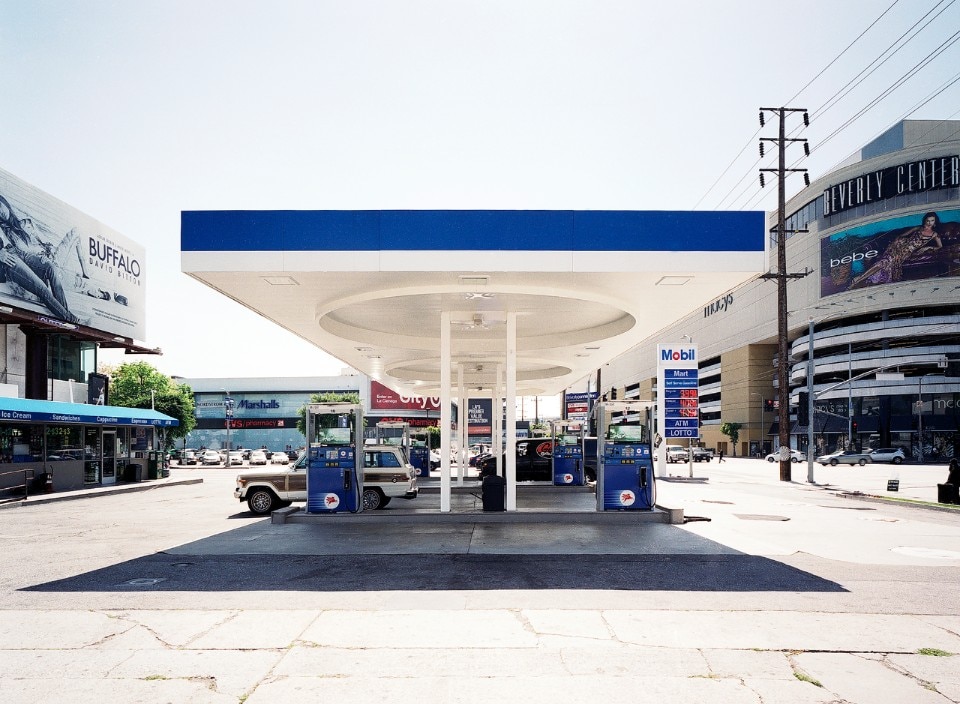A gas station wouldn’t be the first place I would go looking for beneficial social ideals. For those who believe that man-induced climate change is real, value the wellbeing of the natural world and keep an eye on global conflicts over oil resources, the negative impacts of fossil fuels have eclipsed the better effects that oil and gas have had on society; like increased mobility and comfort. In 1965, as today, the gas station was the storefront for fossil fuels, a necessary evil for the millions of people whose daily lives ran on gas. It was for these people and their routine trips to the gas station, that Noyes work for Mobil was most generous.
Noyes design program for Mobil Oil included graphics, industrial design and architecture, and was intended to create a unified brand image that would help distinguish the company in the mind of the consumer. During the initial research Noyes discovered that Mobil stations were covered with advertisements from local purveyors of products and services, traversed by plastic pennant flags intended to draw attention to the stations, and painted with floor markings to direct traffic, all of which drew customers attention away from the primary reason for their visit; refueling. Even worse, many of the Mobil stations that Noyes first encountered lacked protective awnings to shield visitors and employees from the elements.
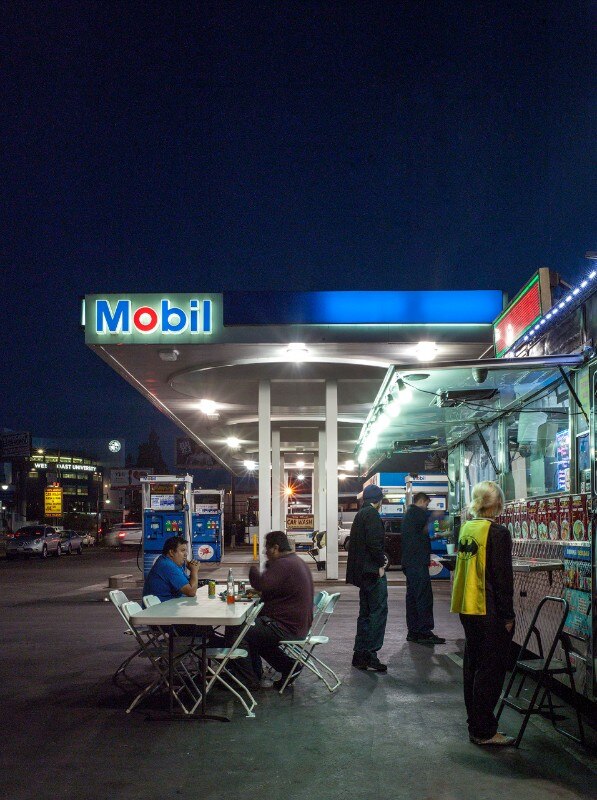
Noyes hired Ivan Chermayeff and Tom Geismar to work with him on Mobil’s logo and graphic system, and the group jettisoned the mess they found, and introduced clear signage to designate products and services. This alone would have simplified life for busy customers, but Noyes also introduced circular awnings above each gas pump, inspired by sun umbrellas, that blocked the sun and rain, and lit the gas pumps at night. From 1964, the year Noyes was hired, to 1965, the year Noyes solutions were implemented, the Mobil customer experienced a dramatic improvement in service. Instead of scanning a jungle of signage for the product they sought and standing in the rain while pumping gas in the dark, under Noyes design program the Mobile customer could intuitively locate whatever they came for and fuel their car dryly at a well-lit pump.
From 1964, the year Noyes was hired, to 1965, the year Noyes solutions were implemented, the Mobil customer experienced a dramatic improvement in service.
If we would multiply the number of people who refuel their cars at Mobil stations by the times per year that they refuel their cars, the number of refuelings would be very large. Then factor in that the experience of refueling has been made dramatically more pleasant. Finally divide the number of improved experiences over the hundreds of communities with Mobil stations or the millions of individuals who stop at a station on their way home from work, heading to a date, or going to the market, and we can see that that Noyes’ relatively small and generous changes make a markedly large difference.
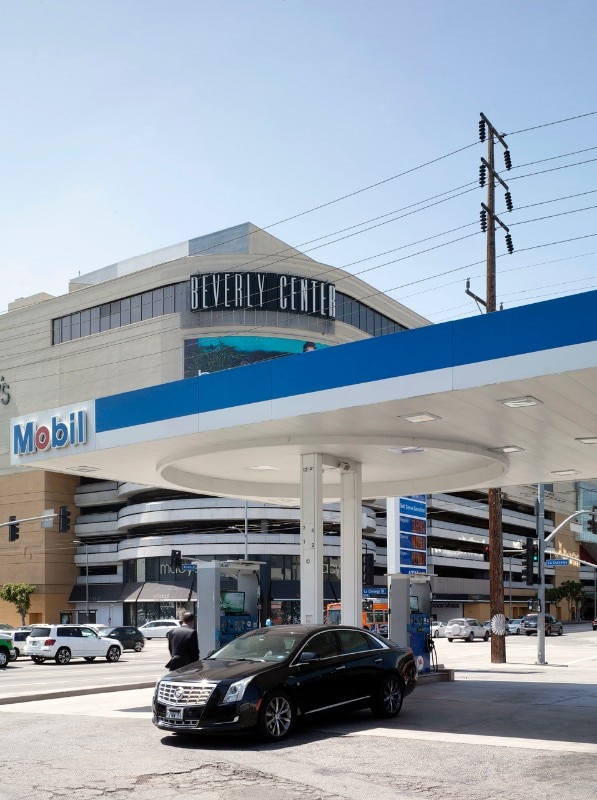
Daniele Ansidei’s photographs of Mobil Gas stations in Los Angeles show the legacy of Noyes’ thinking, and his lasting impact on the fabric of the city. At a moment when society is in desperate need for an alternative to fossil fuel, and legislation is paving the way for electric vehicles to dominate the roads, we can appreciate Noyes’ gas stations as future relics. As it seems that electric charging happens passively while cars are parked, our cities may come to miss the gas station as generous shelters that provided a unique public experience.


